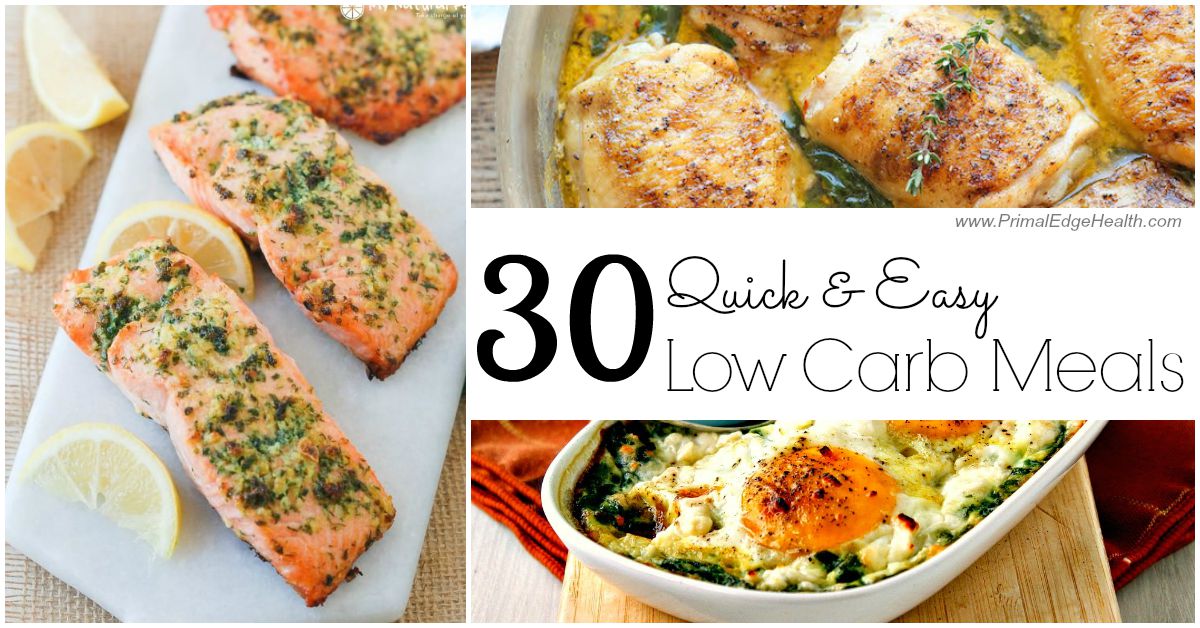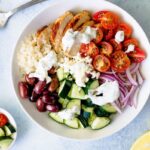Craving delicious, healthy meals but short on time? Imagine vibrant plates bursting with flavor, packed with protein and nutrients, yet surprisingly low in carbohydrates. This isn’t a dream; it’s the reality of low-carb flexitarian eating. We’ll unlock the secrets to creating satisfying, quick meals that cater to your busy lifestyle without sacrificing taste or nutritional value. Prepare to discover a world of simple recipes and efficient meal-prep strategies designed to nourish your body and simplify your life.
This guide dives into five quick and easy low-carb flexitarian recipes, each detailed with step-by-step instructions and nutritional information. We’ll explore efficient meal-prep strategies to save you time and effort throughout the week, highlighting key ingredients and their versatile applications. A visual guide will walk you through assembling a sample meal, highlighting the textures, colors, and aromas of a perfectly balanced plate. Finally, we’ll delve deep into a single recipe, comparing its low-carb version to a higher-carb counterpart, emphasizing the significant health benefits of making the smart choice.
Quick & Easy Low-Carb Flexitarian Recipes
These five recipes offer delicious and nutritious low-carb flexitarian meals, perfect for busy weeknights. Each recipe takes less than 15 minutes to prepare, making healthy eating convenient and enjoyable. They are designed to be adaptable to your dietary preferences and the ingredients you have on hand.
Five Quick Low-Carb Flexitarian Recipes
Below are five detailed recipes, each designed for quick preparation and maximum flavor. These recipes highlight the versatility of a flexitarian diet, incorporating both plant-based and animal-based protein sources.
Recipe 1: Shrimp Scampi with Zucchini Noodles
Prep time: 5 minutes; Cook time: 8 minutes
- Spiralize two medium zucchini into noodles.
- In a large skillet, melt 1 tablespoon of butter over medium heat. Add 1 clove minced garlic and sauté for 30 seconds until fragrant.
- Add 1 pound of shrimp and cook for 2-3 minutes per side, until pink and opaque.
- Add zucchini noodles to the skillet and toss with the shrimp and garlic butter. Cook for 2-3 minutes until noodles are tender-crisp.
- Season with salt, pepper, and a squeeze of lemon juice. Garnish with fresh parsley (optional).
Recipe 2: Speedy Salmon with Asparagus
Prep time: 5 minutes; Cook time: 10 minutes
- Preheat oven to 400°F (200°C).
- Place 1 pound salmon fillet on a baking sheet lined with parchment paper.
- Toss 1 bunch of asparagus with 1 tablespoon olive oil, salt, and pepper.
- Arrange asparagus around the salmon.
- Bake for 10-12 minutes, or until salmon is cooked through and asparagus is tender-crisp.
Recipe 3: One-Pan Chicken and Broccoli
Prep time: 5 minutes; Cook time: 10 minutes
- Preheat oven to 400°F (200°C).
- Cut 1 pound boneless, skinless chicken breasts into bite-sized pieces.
- Toss chicken and 1 head of broccoli florets with 1 tablespoon olive oil, salt, pepper, and garlic powder.
- Spread on a baking sheet and bake for 10-12 minutes, or until chicken is cooked through and broccoli is tender.
Recipe 4: Quick Tofu Scramble with Spinach
Prep time: 5 minutes; Cook time: 7 minutes
- Crumble 1 block of firm tofu into a bowl.
- Heat 1 tablespoon olive oil in a skillet over medium heat.
- Add crumbled tofu and sauté for 5 minutes, breaking it up with a spatula.
- Add 1 cup chopped spinach and cook until wilted.
- Season with salt, pepper, turmeric (for color), and nutritional yeast (for cheesy flavor).
Recipe 5: Ground Turkey and Cauliflower Rice Stir-fry
Prep time: 7 minutes; Cook time: 8 minutes
- Pulse 1 head of cauliflower in a food processor until it resembles rice.
- Heat 1 tablespoon olive oil in a wok or large skillet over medium-high heat.
- Add 1 pound ground turkey and cook until browned, breaking it up with a spatula.
- Add cauliflower rice and stir-fry for 3-5 minutes until heated through.
- Add your favorite stir-fry vegetables (e.g., bell peppers, onions, snap peas) and cook for another 2-3 minutes.
- Season with soy sauce (low sodium), ginger, and garlic.
Nutritional Information Comparison
The following table provides an approximate nutritional breakdown per serving (assuming 4 servings per recipe). Note that these values are estimates and can vary depending on specific ingredients and portion sizes.
| Recipe | Calories (approx.) | Protein (approx.) | Carbs (approx.) | Fat (approx.) |
|---|---|---|---|---|
| Shrimp Scampi | 250 | 25g | 5g | 15g |
| Salmon with Asparagus | 300 | 30g | 5g | 18g |
| Chicken and Broccoli | 280 | 35g | 8g | 12g |
| Tofu Scramble | 200 | 15g | 5g | 10g |
| Turkey and Cauliflower Rice | 350 | 40g | 10g | 20g |
Recipe Versatility and Substitutions
Each recipe offers considerable flexibility. For example, in the Shrimp Scampi, you could substitute the shrimp with scallops or chicken. The salmon recipe could incorporate different vegetables like broccoli or green beans. In the chicken and broccoli recipe, you could add different spices or herbs to change the flavor profile. The tofu scramble is easily adaptable; you could add different vegetables or spices. Finally, the ground turkey stir-fry allows for a wide array of vegetable combinations and different protein sources, such as ground beef or chicken. Feel free to experiment and tailor these recipes to your preferences and available ingredients.
Low-Carb Flexitarian Meal Prep Strategies
Efficient meal prepping is key to sticking to a low-carb flexitarian diet. By dedicating a small amount of time each week, you can transform your eating habits and enjoy delicious, healthy meals without the daily stress of cooking. These strategies focus on maximizing your time while minimizing effort, ensuring a week of satisfying and nutritious meals.
The following strategies provide different approaches to low-carb flexitarian meal preparation, each designed to fit various lifestyles and preferences. They emphasize simplicity, versatility, and efficiency, allowing you to enjoy the benefits of a healthy diet without sacrificing precious time.
One-Pan Wonders
This strategy focuses on utilizing a single baking sheet or large pan to create multiple components of your meals simultaneously. Imagine a vibrant scene: roasted vegetables like broccoli and bell peppers, glistening with olive oil, nestled alongside succulent chicken breasts, all baking together to perfection. The ease of cleanup is a bonus. This method is ideal for meals centered around roasted proteins and vegetables.
Steps: First, chop your vegetables (broccoli, peppers, zucchini, etc.) into bite-sized pieces. Toss them with olive oil, salt, pepper, and any other desired herbs or spices. Arrange them on one side of a large baking sheet. Place your protein source (chicken breasts, salmon fillets, tofu) on the other side. Season the protein accordingly. Bake at a temperature appropriate for both the vegetables and protein until cooked through. This entire process, from prep to oven, usually takes under 45 minutes.
Batch Cooking with Versatile Bases
This method involves preparing large batches of low-carb base components that can be used in multiple meals throughout the week. Picture a large pot bubbling gently on the stove, filled with a fragrant mixture of ground turkey, onions, and garlic – the foundation for a variety of dishes. This approach emphasizes creating flexible components that can be easily transformed into different meals.
Steps: Prepare a large batch of a protein base (ground meat, shredded chicken, or beans for vegetarian options). Simultaneously cook a large quantity of low-carb vegetables (e.g., cauliflower rice, roasted broccoli, or zucchini noodles). These bases can then be combined with different sauces, spices, and additions to create diverse meals. For instance, the ground meat could become tacos one night, a hearty stir-fry another, and a flavorful salad base on a third day. This approach allows for creative meal variations while saving considerable prep time.
Make-Ahead Salads and Bowls
This strategy centers around preparing components for salads and grain-free bowls in advance. Envision a colorful array of pre-chopped vegetables, ready to be assembled into a vibrant, healthy meal. This method is perfect for those who prefer lighter meals or quick lunches.
Steps: Chop vegetables (lettuce, cucumbers, bell peppers, etc.) and store them in airtight containers. Prepare a protein component (grilled chicken, hard-boiled eggs, or canned tuna) ahead of time. Make a large batch of a low-carb dressing (vinaigrette, pesto, or a creamy avocado dressing). Assemble your salads or bowls throughout the week, combining the pre-prepared components as desired. This allows for quick and satisfying meals with minimal daily effort.
Tips and tricks for efficient and effective low-carb flexitarian meal prepping:
- Utilize your freezer: Freeze pre-portioned ingredients or cooked meals for future use.
- Double your recipes: Cook extra portions to enjoy leftovers throughout the week.
- Embrace one-pot or one-pan meals: Minimize cleanup and cooking time.
- Prep ingredients in advance: Chop vegetables and measure spices on the weekend.
- Choose versatile ingredients: Select items that can be used in multiple meals.
- Invest in good quality storage containers: Maintain freshness and organization.
- Plan your meals ahead: Create a weekly menu to guide your shopping and preparation.
- Cook once, eat twice (or more!): Repurpose leftovers creatively.
Recipe Focus: Shrimp Scampi with Zucchini Noodles

This recipe offers a vibrant, low-carb alternative to traditional shrimp scampi, replacing the high-carb pasta with zucchini noodles for a lighter, healthier meal. The preparation is quick and easy, perfect for a weeknight dinner. The bright flavors of garlic, lemon, and shrimp are retained, making this a satisfying and flavorful dish.
Shrimp Scampi with Zucchini Noodles Recipe
This recipe serves two. Preparation time is 10 minutes, and cooking time is 15 minutes.
Ingredients:
- 1 pound large shrimp, peeled and deveined
- 2 medium zucchini, spiralized or julienned into noodles
- 4 cloves garlic, minced
- 1/4 cup dry white wine (optional, can substitute with chicken broth)
- 2 tablespoons olive oil
- 2 tablespoons lemon juice
- 1/4 cup chopped fresh parsley
- Salt and freshly ground black pepper to taste
- Red pepper flakes (optional, for added spice)
Instructions:
- Heat olive oil in a large skillet over medium-high heat. Add minced garlic and cook for about 30 seconds, until fragrant, being careful not to burn the garlic.
- Add shrimp to the skillet and cook for 2-3 minutes per side, until pink and cooked through. Remove shrimp from skillet and set aside.
- Add zucchini noodles to the skillet and cook for 2-3 minutes, until slightly softened but still with a bit of bite. Stir occasionally.
- Pour in white wine (or chicken broth) and lemon juice. Bring to a simmer and cook for 1-2 minutes, allowing the sauce to slightly reduce.
- Return shrimp to the skillet. Stir in parsley, salt, pepper, and red pepper flakes (if using). Cook for another minute to heat through and combine flavors.
- Serve immediately. Garnish with extra parsley if desired.
Comparison with High-Carb Version
A traditional shrimp scampi recipe typically uses linguine or spaghetti, significantly increasing the carbohydrate content. The high-carb version would substitute the zucchini noodles with approximately 1 pound of pasta, requiring a longer cooking time (around 8-10 minutes for pasta). The overall calorie count would be considerably higher due to the added carbohydrates from the pasta. The preparation would involve boiling the pasta separately before adding the shrimp and sauce. The flavor profile remains largely similar, with the main difference being the textural contrast between the pasta and zucchini noodles.
Health Benefits of the Low-Carb Version
The low-carb version offers several health advantages. Replacing pasta with zucchini noodles significantly reduces the carbohydrate intake, potentially leading to better blood sugar control and weight management. Zucchini is also a good source of vitamins and minerals, adding nutritional value to the dish. The lower carbohydrate content may also contribute to reduced inflammation and improved heart health, compared to a high-carb meal rich in refined carbohydrates. The low-carb option provides a higher concentration of protein from the shrimp, supporting muscle growth and satiety.
Mastering the art of quick and healthy eating doesn’t require hours in the kitchen. By embracing low-carb flexitarian principles and implementing the strategies Artikeld here, you can effortlessly create delicious and nutritious meals in minutes. From vibrant salads bursting with fresh flavors to satisfying stir-fries packed with protein, the possibilities are endless. Embrace the convenience, enjoy the flavors, and reap the health rewards of a low-carb flexitarian lifestyle – one delicious, quick meal at a time.
User Queries
What exactly is a flexitarian diet?
A flexitarian diet is primarily vegetarian but allows for occasional meat consumption. It’s a flexible approach to eating, focusing on plant-based foods while incorporating animal products sparingly.
Are low-carb flexitarian meals suitable for weight loss?
Yes, they can be. Reducing carbohydrate intake can aid weight loss by promoting ketosis, a metabolic state where your body burns fat for energy. The high protein and fiber content in these meals also contribute to satiety, helping you feel fuller for longer.
Can I adapt these recipes to suit my dietary restrictions or allergies?
Absolutely! Many of the recipes are easily adaptable. Be sure to check ingredient lists and substitute ingredients as needed to accommodate your specific dietary needs and preferences.
How can I store leftover low-carb flexitarian meals?
Store leftovers in airtight containers in the refrigerator for up to 3-4 days. You can also freeze many of these meals for longer storage. Always allow meals to cool completely before refrigerating or freezing.


